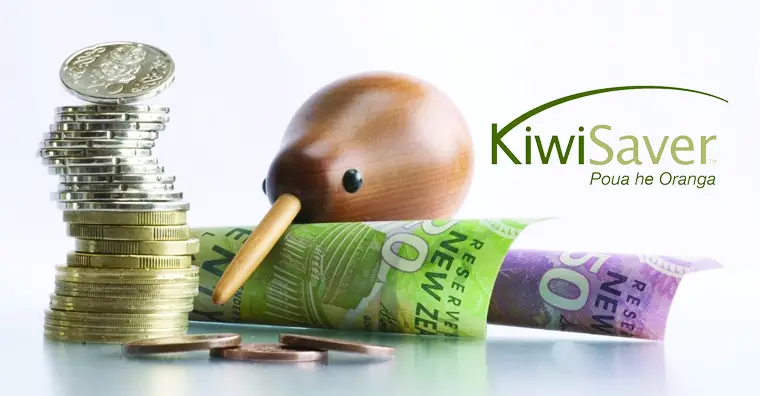Maximizing your KiwiSaver returns is essential for long-term financial security. By making informed decisions and taking advantage of key strategies, you can ensure that your KiwiSaver works hard for your future. In this article, we will explore top tips for making the most of your KiwiSaver and increasing your investment returns.

One key tip is to regularly review your investment options. With a wide range of funds and providers available, it’s important to find the one that suits your risk appetite and financial goals. Assessing your chosen fund’s performance and fees will help you make an informed decision.
Another strategy is to consider voluntary contributions. By contributing more than the minimum amount, you can boost your KiwiSaver account over time and benefit from the power of compounding returns.
Diversification is also crucial. Spreading your investments across different asset classes can help reduce risk and enhance returns. Understanding your risk profile and adjusting your investment mix accordingly is a smart move.
Lastly, keeping track of any government contributions and maximizing employer contributions can further boost your KiwiSaver returns. By staying informed and taking advantage of these opportunities, you can get the most out of your KiwiSaver.
With these top tips, you can confidently navigate the world of KiwiSaver and achieve better returns for a financially secure future.
What is KiwiSaver?
KiwiSaver is a voluntary retirement savings scheme in New Zealand that helps individuals save for their retirement. It is designed to provide a long-term savings solution and offers a range of benefits, including contributions from the government and potential employer contributions. By participating in KiwiSaver, individuals can grow their savings over time and enjoy a more comfortable retirement.
Why is KiwiSaver important for maximizing returns?
KiwiSaver is an excellent tool for maximizing returns due to its structure and various investment options. The contributions you make to your KiwiSaver account, along with any additional voluntary contributions, are invested in different assets such as shares, bonds, and property. By diversifying your investments, you can potentially achieve higher returns while managing risk.
In addition, KiwiSaver offers the advantage of employer contributions. Your employer is required to contribute a percentage of your salary to your KiwiSaver account, which can significantly boost your savings. Furthermore, the government also contributes to your KiwiSaver account through annual member tax credits and the first-home buyer subsidy, if eligible. These contributions can further enhance your returns and help you achieve your financial goals.
Understanding KiwiSaver contributions and employer contributions
To make the most of your KiwiSaver, it’s crucial to understand the different types of contributions. The minimum contribution rate is 3% of your before-tax pay, but you can choose to contribute more. Voluntary contributions can be made at any time, allowing you to accelerate your savings and increase your investment returns.
Employer contributions are another key aspect of KiwiSaver. Your employer is required to contribute a minimum of 3% of your before-tax pay to your KiwiSaver account. Some employers may choose to contribute more, so it’s important to check your employment agreement or speak with your employer to understand the exact contribution amount. Taking full advantage of employer contributions can significantly boost your KiwiSaver returns.
Choosing the right KiwiSaver fund
When it comes to maximizing your KiwiSaver returns, choosing the right fund is crucial. KiwiSaver funds offer different investment strategies and risk profiles, so it’s important to select one that aligns with your financial goals and risk appetite.
Before choosing a fund, consider factors such as the past performance of the fund, fees, and the investment approach of the provider. Reviewing your fund’s performance over time can give you an indication of its potential future returns. Additionally, comparing fees across different funds can help you minimize costs and maximize returns.
It’s also worth considering the investment approach of the provider. Some providers may have a more active investment strategy, while others may take a passive approach. Understanding the investment philosophy and approach of the provider can help you make an informed decision.
Monitoring and reviewing your KiwiSaver account
Once you have chosen a KiwiSaver fund, it’s essential to regularly monitor and review your account. Keeping track of your investments allows you to assess their performance and make any necessary adjustments.
Monitoring your KiwiSaver account involves reviewing your fund’s performance against its benchmark, analyzing fees, and considering any changes in your financial goals. If your fund consistently underperforms or the fees are high, it may be worth considering switching to a different fund.
Regularly reviewing your KiwiSaver account ensures that your investments are aligned with your financial objectives and helps you make the necessary adjustments to maximize returns.
Taking advantage of government contributions and incentives
The government offers several incentives and contributions to help individuals maximize their KiwiSaver returns. One such incentive is the annual member tax credit. If you contribute at least $1,042.86 to your KiwiSaver account between July 1 and June 30 each year, the government will contribute 50 cents for every dollar you contribute, up to a maximum of $521.43.
Another incentive is the first-home buyer subsidy. If you meet the eligibility criteria, you may be eligible for a grant of up to $5,000 when purchasing your first home. This subsidy can provide a significant boost to your KiwiSaver savings and help you achieve your homeownership goals.
It’s important to stay informed about these government contributions and incentives and take advantage of them to maximize your KiwiSaver returns.
Strategies for increasing your KiwiSaver savings
In addition to the contributions and incentives mentioned above, there are several strategies you can employ to increase your KiwiSaver savings and maximize returns.
One strategy is to contribute more than the minimum required amount. By making voluntary contributions, you can accelerate the growth of your KiwiSaver account and benefit from the power of compounding returns. Even small additional contributions can make a significant difference over time.
Another strategy is to review your investment mix regularly. As your financial goals and risk appetite may change over time, it’s important to ensure that your investments align with these changes. Adjusting your investment mix by diversifying across different asset classes can help manage risk and potentially increase returns.
Finally, consider seeking professional advice. A financial advisor can help you develop a personalized KiwiSaver strategy based on your specific circumstances and goals. They can provide valuable insights and guidance to ensure you make the most of your KiwiSaver and maximize returns.
Common mistakes to avoid when managing your KiwiSaver
While there are many ways to maximize your KiwiSaver returns, it’s important to avoid common mistakes that can hinder your progress.
One common mistake is not reviewing your KiwiSaver account regularly. Failing to monitor your account can result in missed opportunities for growth and potential underperformance. Regularly reviewing your investments and making necessary adjustments can help you stay on track.
Another mistake is not understanding the fees associated with your KiwiSaver fund. High fees can eat into your returns over time, so it’s important to compare fees across different funds and choose one that offers a competitive fee structure.
Lastly, many individuals overlook the importance of diversification. Putting all your KiwiSaver savings into a single asset class can expose you to unnecessary risk. Diversifying your investments across different asset classes can help reduce risk and potentially increase returns.
KiwiSaver investment options and diversification
KiwiSaver offers various investment options to suit different risk profiles and financial goals. Understanding these options and diversifying your investments can help maximize your returns.
The investment options typically include conservative, balanced, growth, and aggressive funds. Conservative funds focus on capital preservation and are suitable for individuals with a low-risk tolerance. Balanced funds aim to provide a balance between growth and stability. Growth funds prioritize capital growth and are more suitable for individuals with a long-term investment horizon. Aggressive funds seek high returns but come with higher volatility and risk.
Diversification is crucial for minimizing risk and maximizing returns. Spreading your investments across different asset classes, such as shares, bonds, and property, can help reduce exposure to any single investment’s performance. Understanding your risk profile and adjusting your investment mix accordingly can help you achieve a well-diversified portfolio.
Conclusion: Taking control of your KiwiSaver for a brighter financial future
Maximizing your KiwiSaver returns is essential for securing a brighter financial future. By following the top tips outlined in this article, you can take control of your KiwiSaver and maximize your investment returns.
Remember to regularly review your investment options, consider voluntary contributions, diversify your investments, and take advantage of government contributions and incentives. Avoid common mistakes and seek professional advice when needed.
With these strategies in place, you can confidently navigate the world of KiwiSaver and achieve better returns for a financially secure future. Start making the most of your KiwiSaver today and reap the benefits in the years to come.










